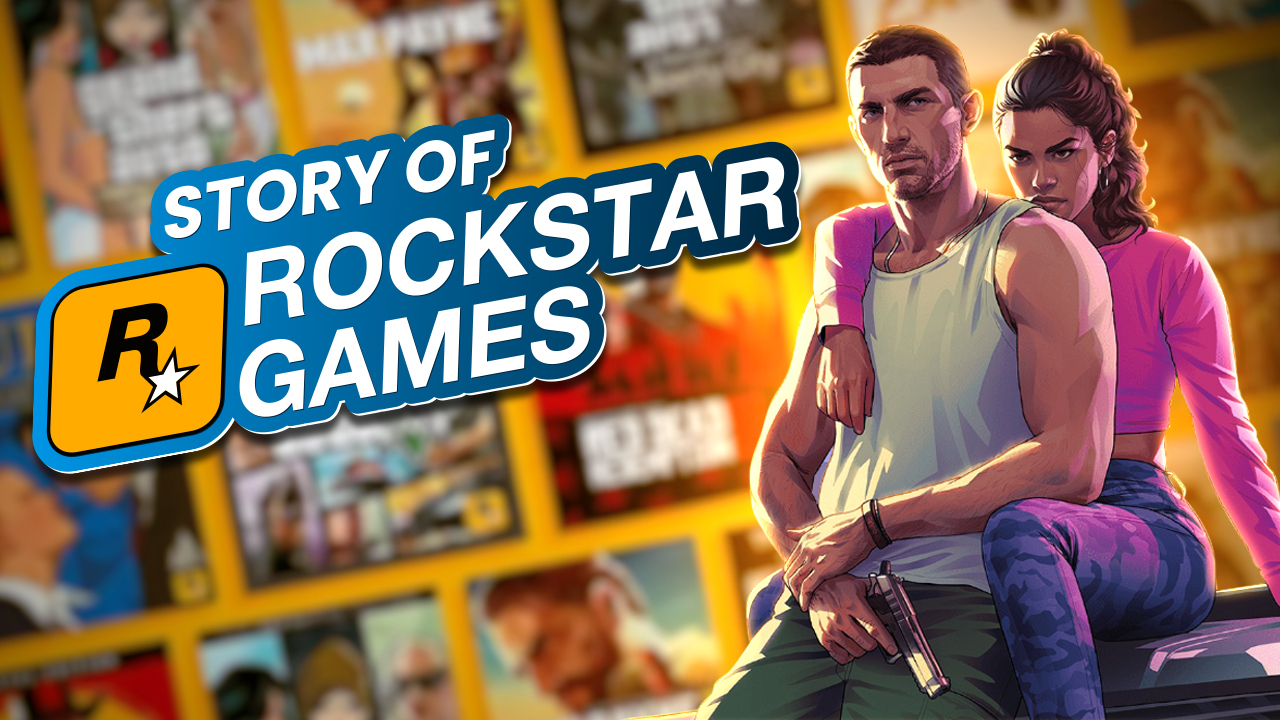When it comes to the world of video games, few names shine as brightly as Rockstar Games. Known for genre-defining open-world titles like Grand Theft Auto and Red Dead Redemption, Rockstar has captivated gamers for decades with richly detailed worlds and gripping narratives. However, much of the magic behind Rockstar’s success remains a mystery due to one defining attribute: their famously long development timelines.
The Allure of Rockstar’s Timeless Creations
While the average Triple-A game takes 2 to 3 years to develop, Rockstar’s titles often have development cycles spanning over 5 years, sometimes even approaching a decade. For instance, the launch of the Western epic Red Dead Redemption 2 in 2018 ended an 8-year wait, during which anticipation reached fever pitch. But why exactly does it take so long for Rockstar to bring their games from conception to reality? The answer lies in the staggering amount of effort they pour into world-building and storytelling.
From Humble Beginnings to Global Recognition
Rockstar’s journey traces back to 1984 with the founding of DMA Design, a Scottish studio created by childhood friends passionate about gaming. After initial successes with 2D titles like Menace and Blood Money, DMA struck gold in 1997 with the open-world crime game Grand Theft Auto. This game revolutionized the industry with its dynamic combination of action, driving, and freedom to explore, selling over 3 million copies.
This breakthrough success led to DMA’s acquisition by BMG Interactive, which introduced English producers, brothers Sam and Dan Houser, into the mix. Together, they formed Rockstar Games under publisher Take-Two Interactive, retaining DMA as Rockstar North. With the resources to dream bigger, the 2001 release of Grand Theft Auto III took the series fully into 3D, captivating gamers and critics alike, and selling over 14.5 million copies. Rockstar was now cemented as a boundary-pushing creative force.
The Evolution of an Industry Giant
Over the 2000s, Rockstar leveraged its technical prowess to enhance storytelling and world immersion. The 2004 release of Grand Theft Auto: San Andreas wowed audiences with its sprawling state, covering cities, countryside, and deserts. Its gripping gangster narrative, coupled with enhanced customization like RPG-style stats, pushed sales over 21.5 million copies.
Rockstar also found success by applying its open-world expertise to new settings, like the American West. In 2010, Red Dead Redemption placed players in the cowboy boots of the Old West during its death throes, weaving a poignant tale of loyalty and loss. Its critical acclaim demonstrated that Rockstar’s creative firepower extended beyond crime capers, becoming the top-selling game of the year.
By the mid-2010s, Rockstar stood atop the gaming world both creatively and financially. In April 2022, Grand Theft Auto V passed $6 billion in lifetime sales, making it the highest-grossing media product ever. Such phenomenal success results from Rockstar’s obsession with depth and detail in realizing their virtual worlds. But as titles like Red Dead Redemption 2 show, that dedication comes at the cost of vast development timelines. So what exactly goes into those long development cycles?

Crafting Unforgettable Experiences
At the core of any Rockstar game lies its open world—the expansive setting where its story unfolds. For instance, reconceptualizing the American West of 1899 in Red Dead Redemption 2 required years of research and design. Rockstar field-tripped across plains, mountains, and swamps to study topography and wildlife firsthand. This research informed procedural systems governing everything from ecosystem food chains to the minute details of horse anatomy.
Rockstar’s devotion to authenticity extends to architecture and culture. The development team pored over historical photography of American frontier towns, right down to the materials and tools used in construction, to recreate detailed urban environments with remarkable historical accuracy. Such painstaking world-building makes these spaces feel truly lived-in. But breathing life into these worlds requires another vital ingredient—people.
Characters and Stories That Resonate
What’s a world without inhabitants? Rockstar’s titles thrive on eclectic characters, from gruff cowboy protagonist John Marston to eccentric billionaire playboy Tony Prince. Their personal narratives intertwine with the broader storylines thanks to talented writers like lead scribe Dan Houser. Extracting these memorable performances requires on-set directing chops—over thousands of animations were hand-keyed for Red Dead Redemption 2, capturing everything from human expressions to animal movements.
Remarkably, even side characters receive similar attention. For example, RDR2’s ambient NPC citizens each have individual 80-page scripts! This level of hand-crafted detail makes them seem like they lead fully realized lives rather than just milling props. When you combine this character depth with epic story arcs spanning love, loss, and betrayal framed against rich historical backdrops, you have a recipe for unforgettable interactive storytelling.
Balancing Creativity and Workload
Executing Rockstar’s signature brand of immersive open worlds is no simple feat. Their exacting standards require custom tools, such as proprietary engines and asset pipelines, costing millions in R&D. At its peak, Red Dead Redemption 2’s credits spanned over 4,500 names across every Rockstar studio worldwide.
Managing talent pools this large has sparked controversy, with allegations of excessive crunch hours surfacing in 2018. However, Rockstar maintains that these accusations misrepresent the typical workload, which allows for flexibility. Despite these work culture concerns, the company has navigated pressure admirably, delivering multiple record-smashing titles.
With the recent reveal of development on the next Grand Theft Auto entry ramping up, Rockstar is continuing its pioneering journey into interactive worlds brimming with life. Based on their history, this likely signals another near-decade between releases—a cycle sure to stoke anticipation among its legions of devoted fans.
Understanding Rockstar’s Extended Timelines
The sheer breadth of Rockstar’s world-building vision demands extended timeframes. Every bustling urban sprawl or rugged canyon has artistry poured into it. The clock ticks slower to let memorable characters guide players through gripping arcs. With so much to unpack, perhaps it makes sense that legendary experiences come only once or twice per console generation.
While the long silent periods between game announcements frustrate some, they allow Rockstar’s creative talents to hone the next eye-popping spectacle in the wings. Rockstar’s motto is to set new benchmarks, not chase market trends—and their stellar track record shows that this dedication pays off.
The Future of Rockstar Games
As gamers everywhere eagerly await glimpses of the new worlds Rockstar is crafting behind the curtain, one thing is guaranteed—however long it takes, the reveal will be worth the wait. Tracing Rockstar’s journey from scrappy upstarts to Triple-A titans has all the twists and triumphs of their pixelated adventures. Through three decades, their open-world expertise has scaled new heights of technical achievement and storytelling prowess.
Bringing such living worlds to life demands monastic commitment. Every new title sees fresh frontiers pushing engineers, artists, and writers to their creative limits over years-long marathons. It’s a challenging path that reaffirms a studio vision focused on transporting innovation rather than chasing commercial targets.
Rockstar’s Legacy and What’s Next
The fruits of Rockstar’s unique development philosophy remain remarkable in capturing gamer imagination and zeitgeist alike. And with PC and console firepower exponentially increasing, along with new sensory horizons like VR on the rise, Rockstar’s best may still be yet to come.
In the end, Rockstar Games is more than just a game developer—it’s a studio that meticulously crafts worlds, tells stories, and creates experiences that resonate deeply with players, leaving an indelible mark on the gaming industry. And for that, the wait is always worth it.







